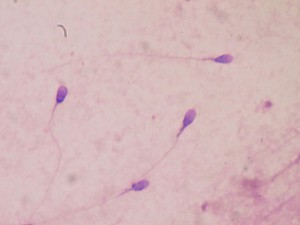DDT and PCB exposure can lead to sperm abnormalities
Researchers from George Washington University have found that men exposed to dichlorodiphenyldichloroethylene (DDE)—a byproduct created when DDT is broken down—and polychlorinated biphenyl (PCB) pollutants during adolescence have more abnormal chromosomes in their sperm than men who were not exposed. Ninety men from the Faroe Islands donated blood serum and semen samples for the study. Forty of the 90 participants also had umbilical cord blood that was collected and stored from birth as well as blood serum samples taken at age 14 analyzed. Blood serum samples were analyzed for metabolites produced when the body breaks down the pesticide DDT and for PCBs. Semen samples were examined for quality and included measurements of sperm count, percentage of mobile sperm, physical characteristics and measurements of chromosomal abnormalities. Participants who were exposed to higher levels of DDT and PCBs during adolescence and adulthood had higher incidences of abnormal sperm. While DDT and PCBs were both banned from use in the United States in the 1970s, they can persist in the environment for long periods of time. DDE and PCBs are known bio-accumulators, meaning that they persist in the environment as well as in the tissues of organisms that inadvertently consume them. Humans are typically exposed when they consume animals or animal products that have accumulated the persistent pollutants. “Taken together, the results reported here further demonstrate links between organochlorine exposures and sperm abnormalities and illustrate that the impacts of persistent pollutants on testicular maturation and function need deeper investigation,” the authors concluded.


